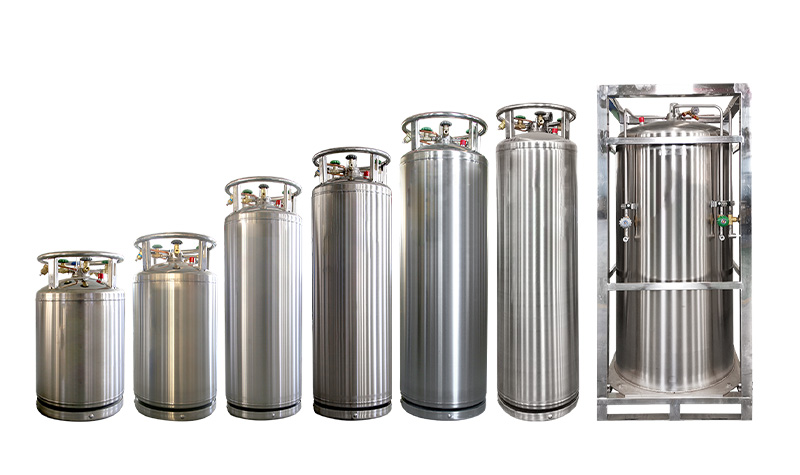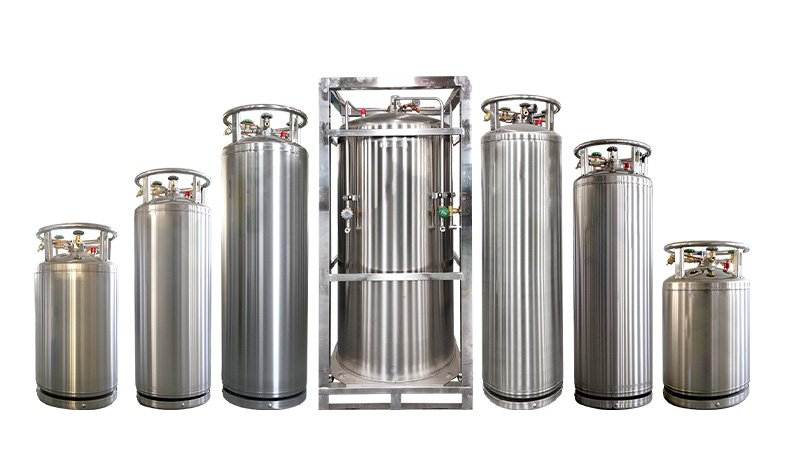Dewar Flask is an efficient insulated container specifically designed for storing and transporting low-temperature cryogenic liquids such as liquid nitrogen, liquid oxygen, liquid argon, liquid CO2 etc. It is widely used in scientific research, medical, industrial, and food industries. The following is a systematic introduction to the structural principles, main uses, and safety precautions of Dewar flasks:
Structure and Principle
Double-layer structure is adopted for the dewar flask, with a vacuum layer between the inner and outer layers, and is often silver plated to reduce thermal radiation. The core insulation principle includes:
-Preventing heat conduction: The vacuum layer between the two layers effectively prevents heat from entering through conduction.
-Preventing thermal convection: The vacuum environment eliminates the heat exchange caused by air convection.
-Preventing thermal radiation: Silver plating on the inner wall can reflect thermal radiation, further reducing heat transfer.
This design allows the Dewar flask to maintain a low internal temperature for a long time, even if the external environment is at ambient temperature.
Main purpose
Dewar flasks are widely used in the following fields:
A: Scientific research experiments store low-temperature media such as liquid nitrogen, liquid helium, and liquid hydrogen for physical, chemical, and biological experiments.
B: The medical industry preserves biological samples (such as stem cells, embryos, vaccines).
C: Industrial manufacturing, storage, and transportation of industrial gases such as liquid oxygen and liquid argon.
D: Frozen food processing and transportation in the food industry.
E: Aerospace liquid hydrogen and liquid oxygen are storage containers for rocket fuel.

Precautions for use and safe operation
Due to the frequent use of Dewar flasks for storing extremely low temperature or high pressure liquids, improper use may cause hazards such as frostbite, explosion, and leakage. Therefore, the following safety regulations must be strictly followed:
Pre use inspection
-Check the bottle body for cracks, dents, and damage.
-Check if the valves, interfaces, and sealing rings are intact and if there are any leaks.
-Check if the pressure gauge and safety valve are working properly.
Operating Specifications
-Wear protective equipment: low-temperature gloves, goggles, protective clothing, and anti smashing shoes.
-Slowly open the valve to avoid sudden liquid ejection.
-Control the flow rate when pouring liquid and ensure that no one is standing in the pouring direction.
-Do not overfill to avoid excessive pressure caused by liquid expansion.
Environment and Storage
-The usage environment should be well ventilated to prevent the accumulation of low-temperature gases and oxygen deficiency.
-When storing, avoid direct sunlight, high temperatures, and humid environments.
-Long term disuse should be emptied of liquid, cleaned and dried, and sealed for storage.
emergency response
-If a leak occurs, evacuate personnel immediately and ventilate.
-If frostbite occurs, soak in warm water at 37-40 ℃ for more than 15 minutes, and do not rub or rinse with hot water.
-If the bottle breaks, evacuate immediately and contact professional personnel for handling.
Summary
As an efficient low-temperature storage equipment, cryogenic Dewar flasks from CK Gas Technology have superior insulation performance and wide applications. Please be strictly following the operating procedures and taking good safety precautions to ensure its safe and efficient service to scientific research and industrial production.


